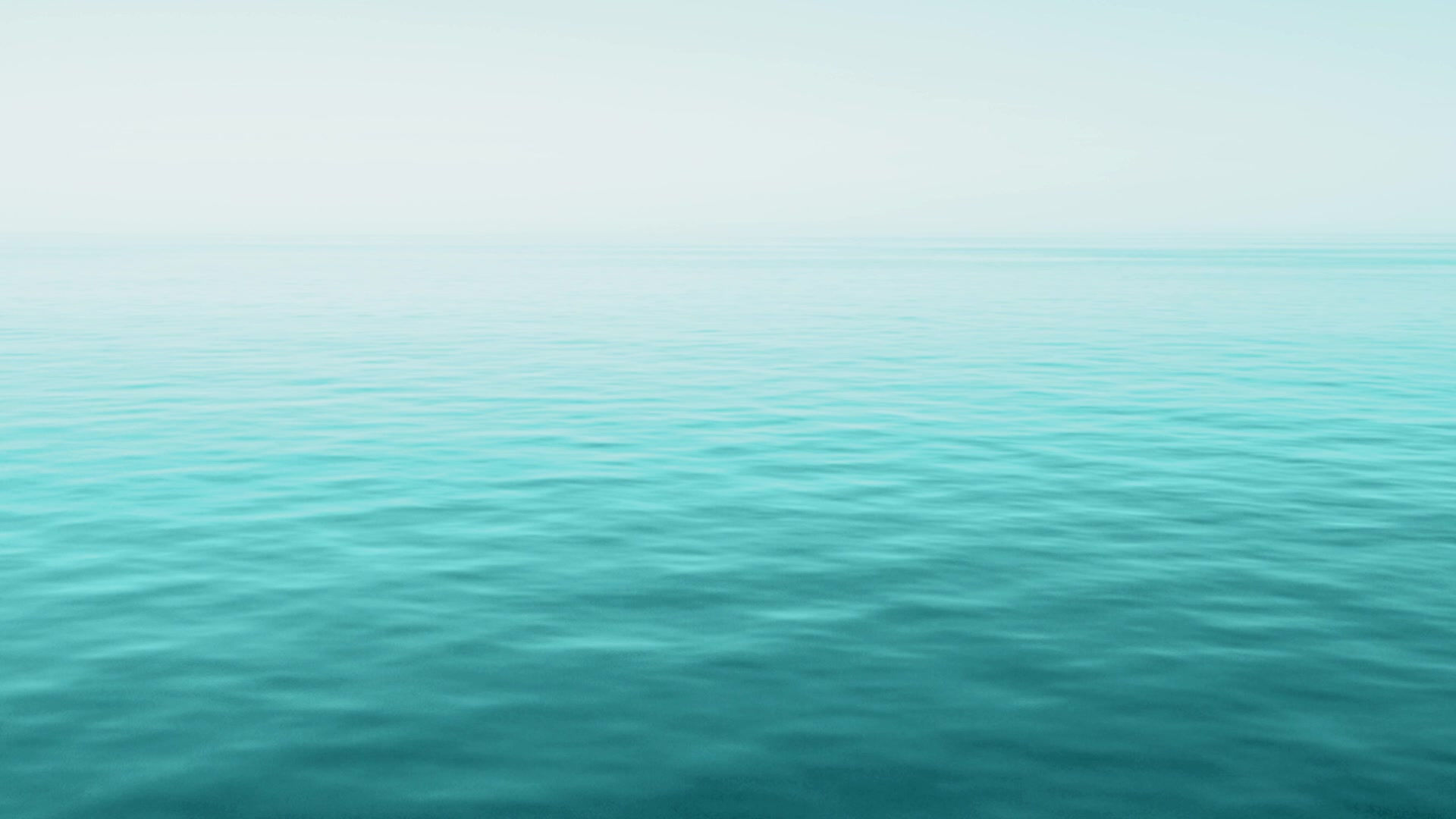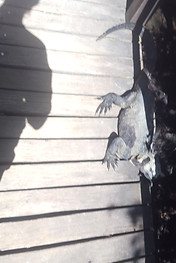

We landed in Isabaltra. We took a jet boat a cross a small bay to have a late lunch. After lunch we were taken to the boat launch which is located on the other side of the island. Then we had a 2-hour ride on a larger jet boat that had us packed like sardines, to get to the Island of Isabella and landed at 6:00 pm where we met our travel guide Joe. The water was an amazing blend of greens blues and turquois.

We immediately set off to visit Flamingo Lagoon. This beautiful water lagoon is a playground for the awkwardly beautiful pink flamingo, a honking, goofy, loveable bird that is all legs an beak. The flamingos here are the American flamingo which are slighty smaller than other flamingos.
They get their flamboyant color from their diet of tiny shrimp. It was evening and the sun was setting so we only saw a half dozen birds. We were told that the early morning is when they can be seen in large numbers

After that we were dropped off at our hotel. The Wooden House Hotel is an intimate hotel with a lot of finished wood, hence the name. Unlike most hotels it runs like a bed and breakfast and the common area lobby seating, restaurant, and bar are located outside in the courtyard. We got a delicious selection of fruits and pastries for breakfast provided with our stay. There is an outside bar in the courtyard across from the main house near the pool. Unfortunately for Mary Kay they didn't know how to make a Margarita but they were able to make a rum and coke for me.

The next day, we decided to break away from our otherwise wildlife-focused trip for a half-day hike up one of the Island’s most active volcanoes, Sierra Negra, and neighboring fissure volcano Chico. The day started early when we were picked up from our hotel at 7:30am by a private driver who took us to a tour company where we assembled our Lunch which was comprised of two tuna sandwiches an apple and Juice box. A naturalist guide joined us there and we left for the tour.
Sierra Negra is a large shield volcano at the southeastern end of Isabela Island in the Galapagos that rises to an altitude of 1124m.
Sierra Negra Volcano



It is one of the most active of the Galapagos volcanoes with the most recent historic eruption beginning in June 2018 and continuing through the summer.
We set off on a well paved lava rock path foor an uphill walk of approximately 3.5 meters and made it to the rim of the Sierra Negra volcano. From atop the crater rim and surrounding lava fields we enjoyed unreal other-worldly views.


After our half day hike went to a small dock which was a sheltered inlet where did our first session of snorkeling. The walk down the trail is a wooden path that bridges you above the mangroves around you. The bay's calm, shallow, clear waters are ideal for observing the incredible array of marine life.





We were able to swim and snorkel alongside tropical fish, sea lions, iguanas and we were able to peek at the fish in their home tucked into the volcanic rock formations and the roots of the mangroves. We snorkeled for about 2 hrs. It was very interesting and pretty but after going and snorkeling in the Great barrier reef last year the number of fish we observed here were much fewer in number.
We set out the next morning for the Las Tintoreras islet. It is named for the white tipped shark that swims in the water there. Luckily they feed on smaller fish and leave humans alone.




After boarding the boat we took a wildlife tour of the bay and saw many blue footed boobies which is a marine bird that is easily recognizable by its distinctive bright blue feet, which is a sexually selected trait. The male struts its electric blue feet in front of the female to attract them as a mate


There were a number of other birds including blue and yellow heron, and pelicans that were fishing the waters. It was really cool to see the fish leaping out of the water to escape the birds. Of course there were many of our sea lion friends lazing on the rocks.
Eventually, we landed on the isle which is comprised mainly of volcanic rock with white tips caused by the white algae growing on it. This was probably one of my top spots to see the iguanas because you are so close to them because they are just all over.


If you look at the slit of water between the high rock formations you can see a large number of white tip reef sharks. While we were there, there were three sealions that were swimming around two of the sharks playfully teasing them. They really put on a great show for us.
We continued around to the point of the island and were greeted by a touching scene. A sea lion was swimming toward shore and was barking as it swam. Then it stopped and we could hear a faint answer from the shore. The adult sea lion swam up on to the beach and a little pup came out of the foilage and began to suckle its mom.



Went back to the boat and floated out into the sheltered bay and began our underwater snorkeling tour of the area. While snorkeling we swam by huge sea turtles just inches away that didn't have a care in the world that humans were all around them. While they are clumsy on land, they are very graceful as they glide through the water and are surprisingly agile as they make turns using their massive flat fins. It was truly a one in a million experience. There were also at of colorful tropical fish with bright yellows, electric blues, silvers and specked all sizes, and little schools of tiny silver that would scatter as we swam toward them. There were sea urchins in the crevices of the lava rocks that were the main habitat for the fish. We even had a large iguana swim right by us along with the ever-playful sea lions. After our swim we went back to shore to have lunch and along the way watched a pelican swoop down into the water to snatch its lunch.

Late that afternoon we caught a boat to take us to Santa Cruz Island to our new hotel. Santa Cruz Island is the most populated Island of the Galapagos. We stayed at the Hotel Fernandina which is located in a quiet neighborhood of the island.



Charles Darwin Research Station

The afternoon was all about tortoises. It started out at the Charles Darwin Research Station which is a biological research station and active breeding center operated by the Charles Darwin Foundation. We learned that he famous Galapagos Tortoise, which fully grown can weigh up to 500 pounds and reach 6 feet in length. Since this was a breeding station, we saw tortoises from eggs and extremely small hatchlings that are only about 2.5 inches through all the stages of growth up to the huge full grown adult tortoises. The hatcheries help make sure the tortoises get to a big enough size to where they have a better chance of surviving once released back to the island.
We heard a loud grunting sound and our naturalist guide pointed to two adult tortoises that were against a tree with one tortoise on top of the other they were mating and that is the only time they ever make noise and that we were fortunate to see this as it does not happen often. Someone asked how long it took them to mate and the guide said the mating would take all day. I knew the Galapagos Tortoise was big, but I didn't know they were also such studs. Now, that's what I call stamina!


We also saw Lonesome George who was preserved in an exhibit. We were told that Lonesome George is the most famous tortoise of them all! He became the face of the Galapagos Islands and an icon for conservation. After the drastic decline in subspecies, Lonesome George was the only known living individual from his specific subspecies until his recent death in 2012.
After leaving the Charles Darwin Research Station we went to the highlands on a hike to see the tortoises in their natural habitat. After a mile and a half of hiking through an area where the mangrove trees were predominant the foliage changed and we began to see the tortoises in the brush alongside the trail.



As we continued the number of tortoises and iguana we observed began to increase and we could see them lumbering through the foliage and eventually came across one walking on the trail path. This afforded us the opportunity to able to get really close. So close that were able to walk all around it. It did not seem to mind that we were curious strangers.


All and all, it was great to see the success that the breeding program has had in raising the population of these glorious giants.
The next day was a travel day we left our hotel at 10.00 to cross to the opposite side of the island of Santa Cruz to catch a water ferry across to Baltra to go to the airport. Along the way we visited the Twin Craters (los Gemelos) which are, in fact, not craters in the highlands. These impressive holes were formed by magma (lava) domes which hardened on the outside but continued to flow on the inside, leaving huge but empty chambers that collapsed with the passing of time and are surrounded by lush and green forests. It is possible to walk along the rim of the craters to better appreciate the view.


We got to the ferry and traversed the barren desert like island of Baltra to get to the airport and catch our flight to Quito
